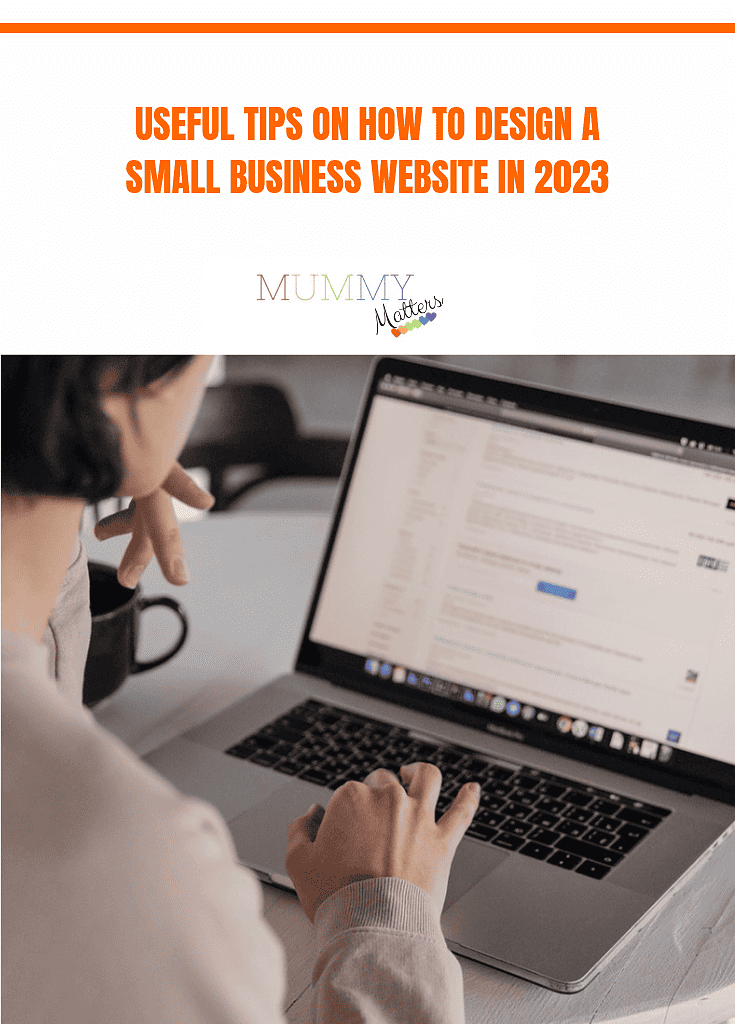In today’s ever-evolving digital landscape, establishing a robust online presence for small businesses cannot be overstated. A well-crafted website is a potent instrument for attracting customers, showcasing products or services, and building credibility. Constructing a website may initially seem intimidating, particularly for those lacking technical expertise. However, armed with the right approach and tools, creating a professional website for your small business can be manageable and highly rewarding. So, here are some of the most essential steps you need to follow to create a small business website in 2023 successfully.
Define your goals

Before delving into the actual creation process, it is crucial first to define the goals and objectives you hope to achieve with your website. Take the time to consider what you want your website to accomplish, whether it’s increasing sales, generating leads, or providing comprehensive information about your business. Having a clear vision and purpose in mind will serve as a guiding force throughout the design and content creation process.
Pick a domain name
The initial step in constructing your small business website is carefully selecting a domain name. Your domain name should ideally mirror your business name or reflect the products and services you offer. It’s essential to choose a domain name that is memorable, easy to spell and preferably ends in the widely recognized “.com” extension. Fortunately, there are numerous domain registration platforms available that allow you to check the availability of your desired domain name and register it promptly.
Choose a reliable hosting provider

Following the selection of a domain name, the next crucial step is to choose a reliable web hosting provider. Web hosting is the service that enables your website to be accessible on the internet. When selecting a hosting provider, consider important factors such as uptime, customer support availability, security features, and scalability. Carefully compare different hosting plans and choose one that aligns with your budget and anticipated website traffic.
Find a way to build your website
Once you have secured a domain name and hosting provider, it’s time to choose a suitable website builder or content management system (CMS) that will enable you to bring your vision to life. Whether you’re creating a marketplace site, a blog, or an e-commerce platform, selecting the right tool is crucial. WordPress is one of the most popular website builders, known for its flexibility and wide range of features. For beginners, navigating WordPress can be a bit daunting. Fortunately, there are resources available to help you get started. For instance, this comprehensive WordPress tutorial for beginners offers step-by-step guidance to set up your website with ease. Additionally, Wix and Squarespace are also popular choices, offering intuitive drag-and-drop interfaces and a variety of templates and customization options. When choosing a platform, consider one that aligns with your technical abilities and offers the necessary features for your small business website.
Think about your staff

Also, it’s beneficial to consider incorporating professional corporate headshots of your team members on your small business website. Including high-quality photographs of your team helps to establish a personal connection with your audience and instill a sense of trust and credibility. When potential customers visit your website, they want to know the faces behind the business and the individuals they may be working with. Professional corporate headshots present your team members in a polished and professional manner, showcasing their expertise and professionalism.
Keep creating new content
Compelling and relevant content lies at the heart of engaging website visitors. Communicate your business’s unique selling propositions, highlight your products or services, and provide valuable information that directly addresses the needs and concerns of your target audience. Incorporating high-quality images, videos, and testimonials will enhance credibility and captivate visitors, increasing the likelihood of converting them into customers.
Check out SEO

Optimizing your website for search engines (SEO) is paramount in improving its visibility and driving organic traffic. Conduct thorough keyword research to identify relevant terms that potential customers may use when searching for businesses like yours. Integrate these keywords naturally throughout your website, including in page titles, headings, and meta descriptions. Create informative and keyword-rich content that not only provides value to your audience but also sends clear signals to search engines regarding the nature of your website.
Keep monitoring and updating
Once your website is up and running, it is imperative to regularly monitor its performance using analytics tools. Track essential metrics such as website traffic, bounce rate, conversion rates, and user behavior to gain invaluable insights into the effectiveness of your website. Armed with this information, you can make informed decisions on how to continuously update and improve your website, ensuring that it remains a valuable asset for your small business.
Building a small business website in 2023 is undoubtedly within reach, even for those without extensive technical expertise. Following the essential steps outlined in this comprehensive guide, you can successfully create a professional and impactful online presence for your small business. Always remember that your website serves as a vital marketing tool that has the potential to attract and engage customers, so it is essential to invest sufficient time and effort into its creation and ongoing maintenance to ensure its long-term success.

